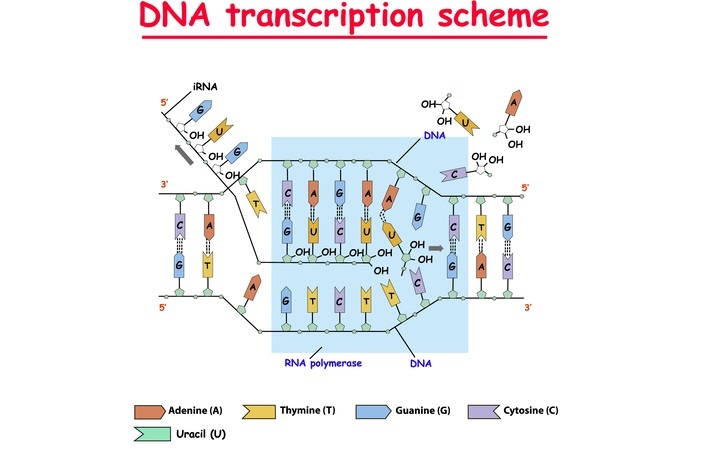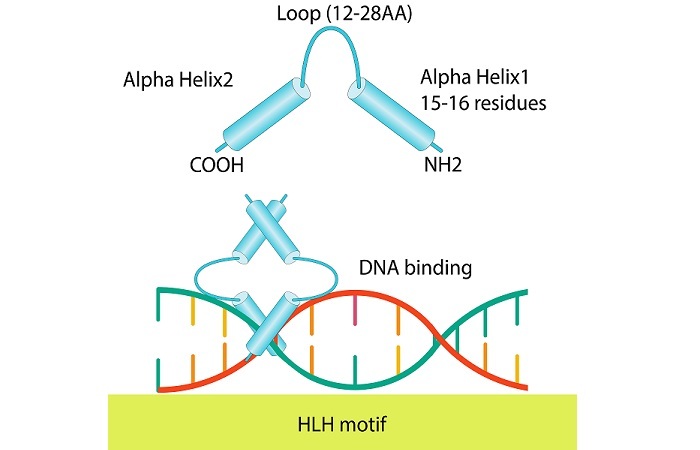
 Data Structure
Data Structure Networking
Networking RDBMS
RDBMS Operating System
Operating System Java
Java MS Excel
MS Excel iOS
iOS HTML
HTML CSS
CSS Android
Android Python
Python C Programming
C Programming C++
C++ C#
C# MongoDB
MongoDB MySQL
MySQL Javascript
Javascript PHP
PHP
- Selected Reading
- UPSC IAS Exams Notes
- Developer's Best Practices
- Questions and Answers
- Effective Resume Writing
- HR Interview Questions
- Computer Glossary
- Who is Who
Transcription Factors: Definition, Effects, and types
Introduction
Transcription factors are proteins that regulate gene expression by binding to specific sequences of DNA in a cell's nucleus. They play an essential role in the process of transcription, which is the first step in the expression of genetic information.
In this tutorial, we will explore the different types of transcription factors, their functions, and their clinical significance.

What are Transcription Factors?
Transcription factors are proteins that bind to specific DNA sequences in the promoter region of a gene and regulate the initiation of transcription.
They can activate or repress gene expression and play a crucial role in development, differentiation, and homeostasis.
Transcription factors work by recruiting other proteins that modify chromatin structure, such as histone acetyltransferases, which loosen the DNA structure, allowing access to the transcription machinery.
Types of Transcription Factors
Transcription factors can be divided into several classes based on their structure, DNA-binding domain, and function. The major classes of transcription factors are ?
Basic Helix-Loop-Helix (bHLH) Transcription Factors
The bHLH transcription factors have a characteristic helix-loop-helix motif that binds to DNA. These factors play a crucial role in the development of various tissues, such as muscle and neurons.

Zinc Finger Transcription Factors
The zinc finger transcription factors have a zinc ion coordinated by two histidine residues and two cysteine residues, forming a finger-like structure that binds to DNA. Zinc finger transcription factors regulate diverse biological processes, such as development, differentiation, and immune response.
Homeobox Transcription Factors
The homeobox transcription factors have a conserved 60-amino acid domain, the homeodomain, which binds to DNA. Homeobox transcription factors play a critical role in embryonic development and cell differentiation.
Leucine Zipper Transcription Factors
The leucine zipper transcription factors have a leucine-rich motif that forms a coiled-coil structure, which binds to DNA. Leucine zipper transcription factors regulate gene expression in response to various stimuli, such as stress and hormones.

Nuclear Receptor Transcription Factors
The nuclear receptor transcription factors are a class of ligand-activated transcription factors that regulate gene expression in response to hormones, vitamins, and other small molecules. The nuclear receptor superfamily includes the estrogen receptor, androgen receptor, and thyroid hormone receptor, among others.
Names and Functions of all Types of Transcription Factors
Basic Helix-Loop-Helix (bHLH) Transcription Factors
MyoD - regulates skeletal muscle differentiation
NeuroD - regulates neuronal differentiation
Max - regulates cell proliferation and differentiation
Zinc Finger Transcription Factors
GATA-1 - regulates erythropoiesis and megakaryopoiesis
Krüppel - regulates segmentation and development
TFIIIA - regulates RNA polymerase III transcription
Homeobox Transcription Factors
Hox - regulates embryonic development and morphogenesis
Engrailed - regulates cell fate in embryonic development
PAX - regulates organogenesis and cell differentiation
Leucine Zipper Transcription Factors
Fos and Jun - regulate cell proliferation and differentiation in response to growth factors and cytokines
C/EBP - regulates gene expression in response to hormones and inflammation
ATF - regulates gene expression in response to stress and hormones
Nuclear Receptor Transcription Factors
Estrogen receptor - regulates gene expression in response to estrogen
Androgen receptor - regulates gene expression in response to androgen
Thyroid hormone receptor - regulates metabolism and development in response to thyroid hormone
Role in Biocontrol Activity
Transcription factors play a crucial role in biocontrol activity by regulating gene expression in response to environmental stimuli. For example, stress-responsive transcription factors, such as the ATF family, regulate gene expression in response to oxidative stress, heat shock, and other stressors.
Similarly, cytokine-responsive transcription factors, such as Fos and Jun, regulate gene expression in response to inflammation and infection.
Transcription factors are also involved in the regulation of immune responses by activating or repressing the expression of immune-related genes.
For instance, the GATA family of transcription factors regulates the expression of genes involved in immune cell development and function, while the NF-?B family of transcription factors regulates the expression of genes involved in inflammation and immunity.
Clinical Significance
Transcription factors have significant clinical significance as they play a crucial role in the development and progression of various diseases. For instance, aberrant activation or inactivation of transcription factors is associated with several types of cancer.
The Myc family of transcription factors is overexpressed in many cancers, leading to uncontrolled cell proliferation and tumor growth. In contrast, the p53 transcription factor, known as the "guardian of the genome," is a tumor suppressor that regulates DNA repair and apoptosis in response to DNA damage.
Transcription factors are also involved in the regulation of metabolic disorders, such as diabetes and obesity.
The peroxisome proliferator-activated receptor (PPAR) family of transcription factors regulates glucose and lipid metabolism and is the target of several drugs used to treat diabetes and dyslipidemia.
Conclusion
In conclusion, transcription factors play a vital role in the regulation of gene expression and are involved in various biological processes, including development, differentiation, and immune response. They are classified into different classes based on their structure, DNA-binding domain, and function, and each class has unique roles and functions.
Transcription factors have significant clinical significance, and their aberrant activation or inactivation is associated with various diseases, making them attractive targets for drug development.

